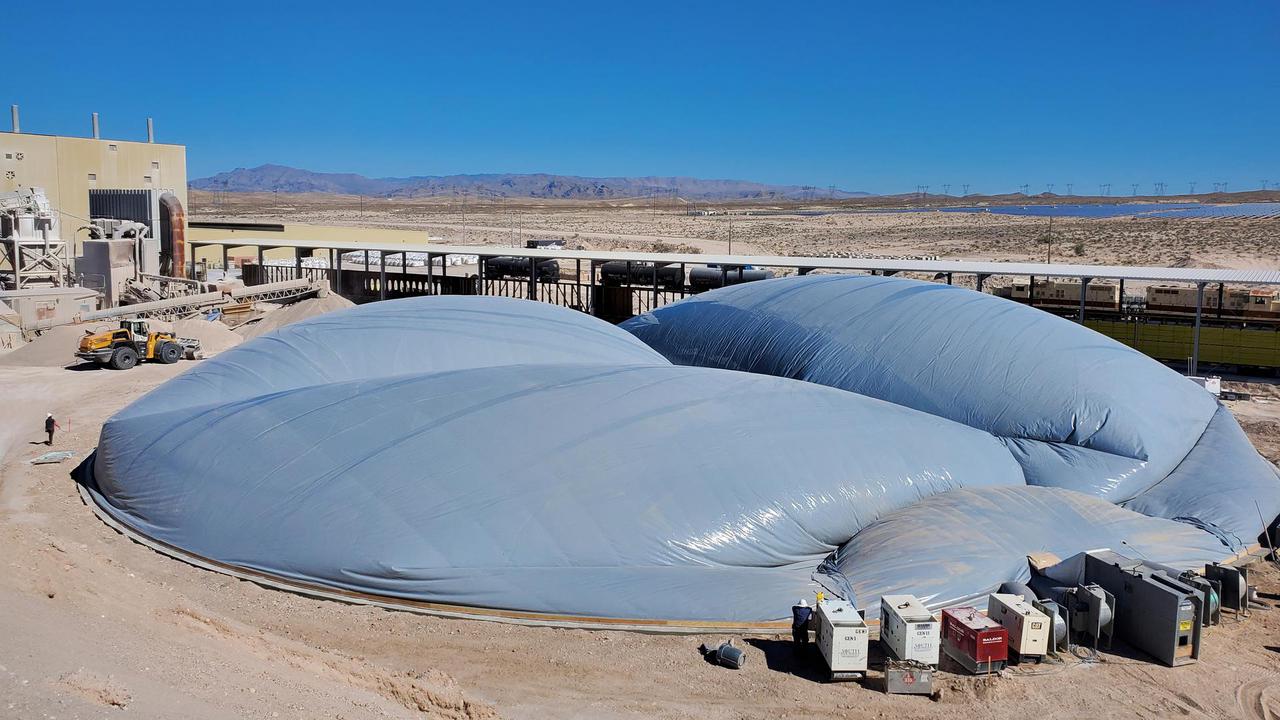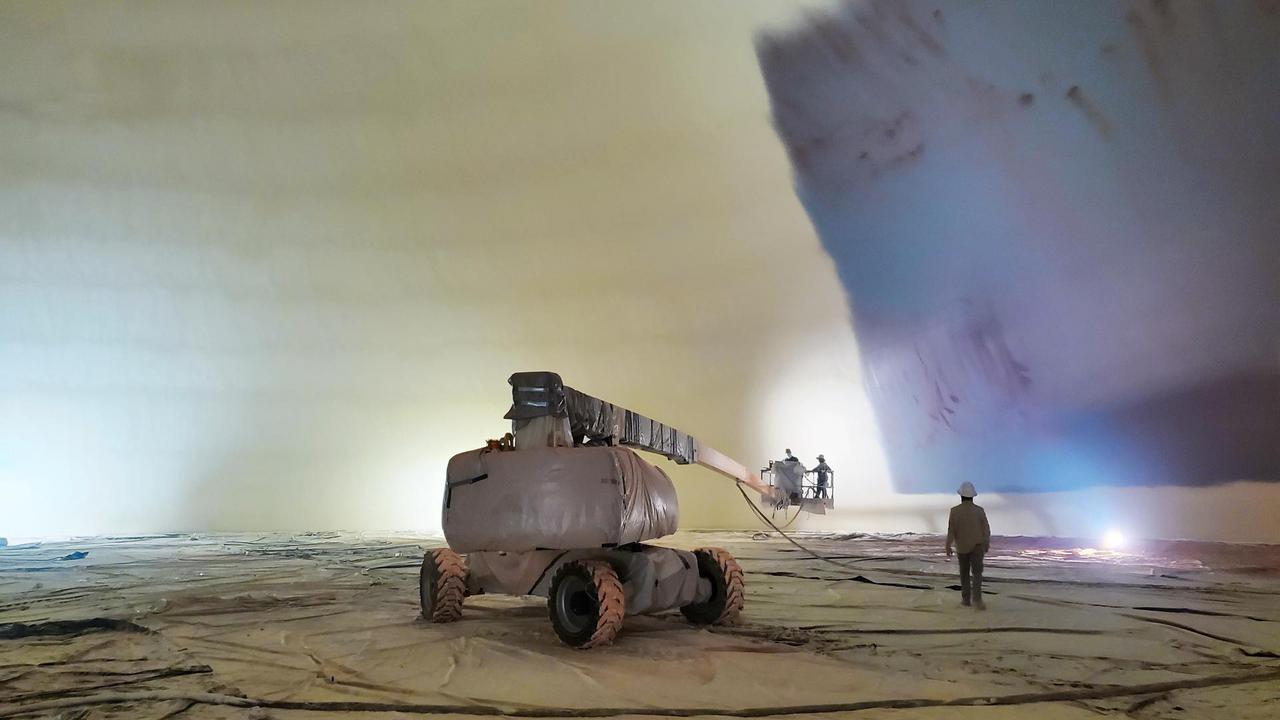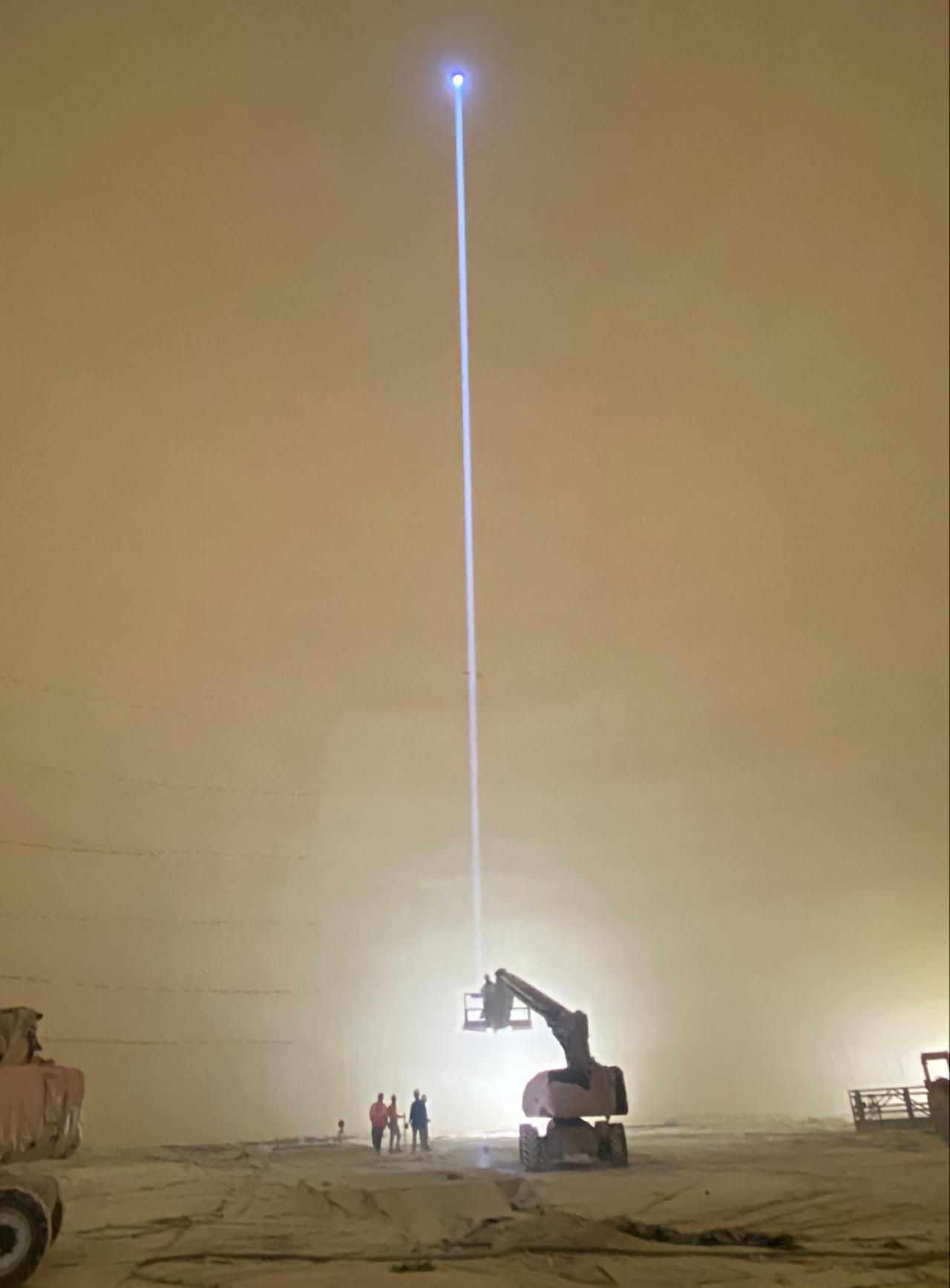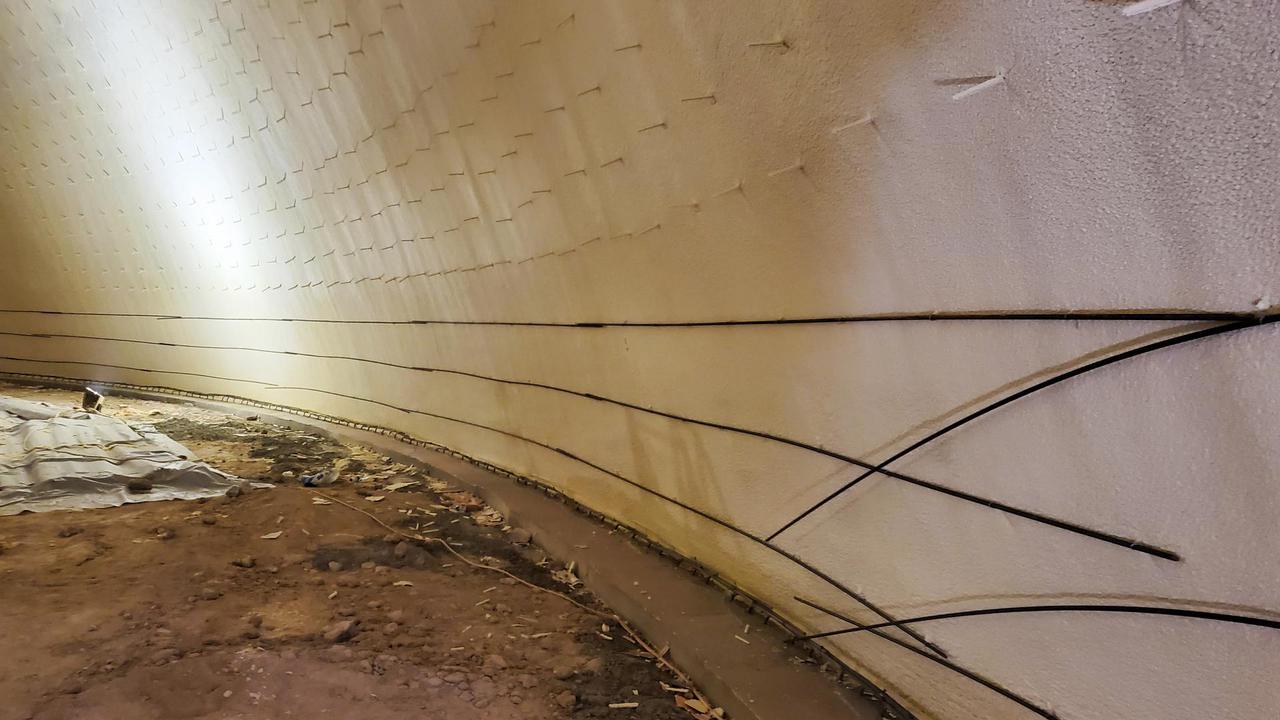Dome Construction Is Nearly Complete for Las Vegas Gypsum Storage
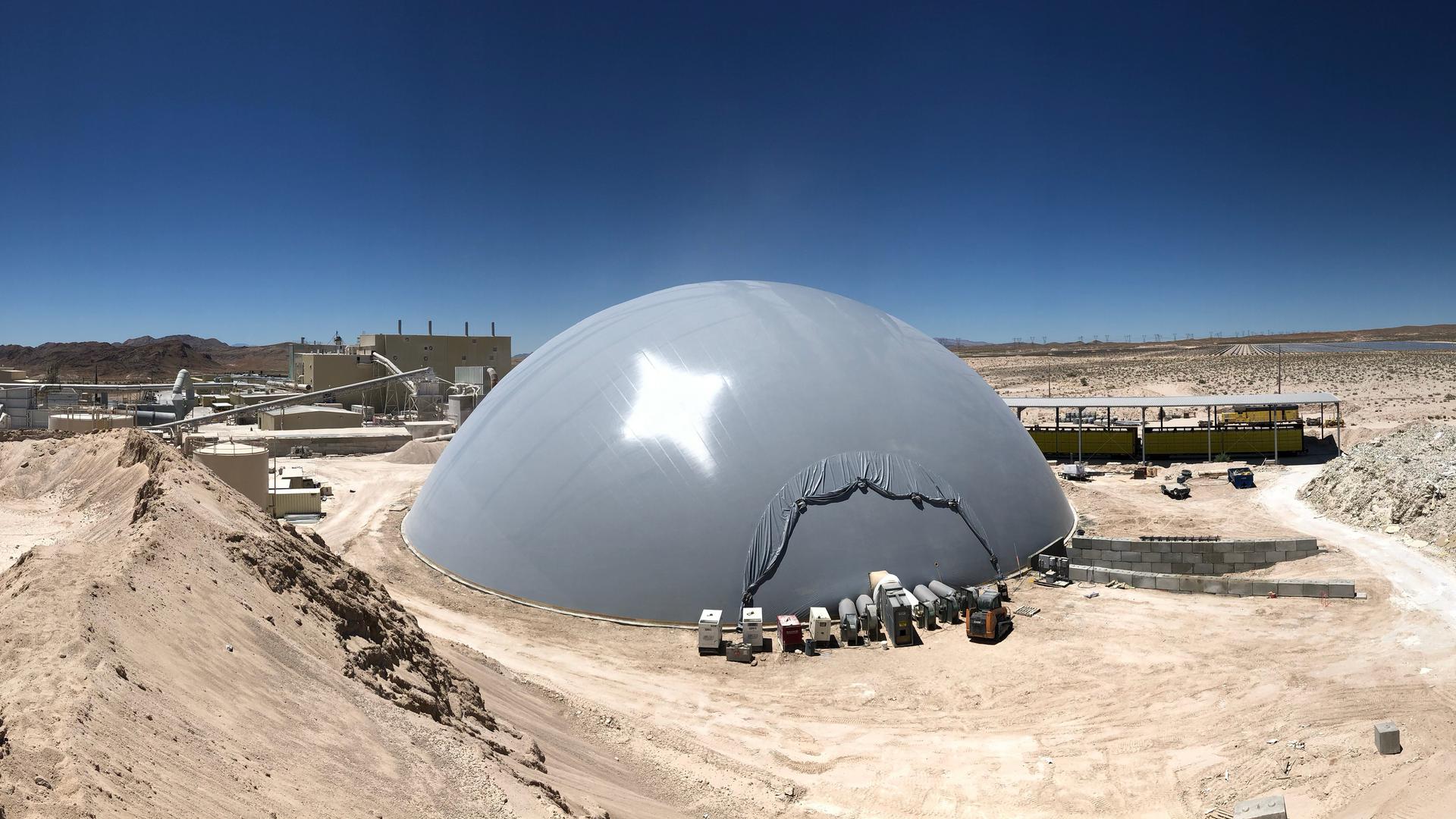
Panorama of inflated Airform for PABCO Gypsum near Las Vegas, Nevada. The 215-foot diameter Monolithic Dome will store 50,000 tons of bulk powder gypsum.
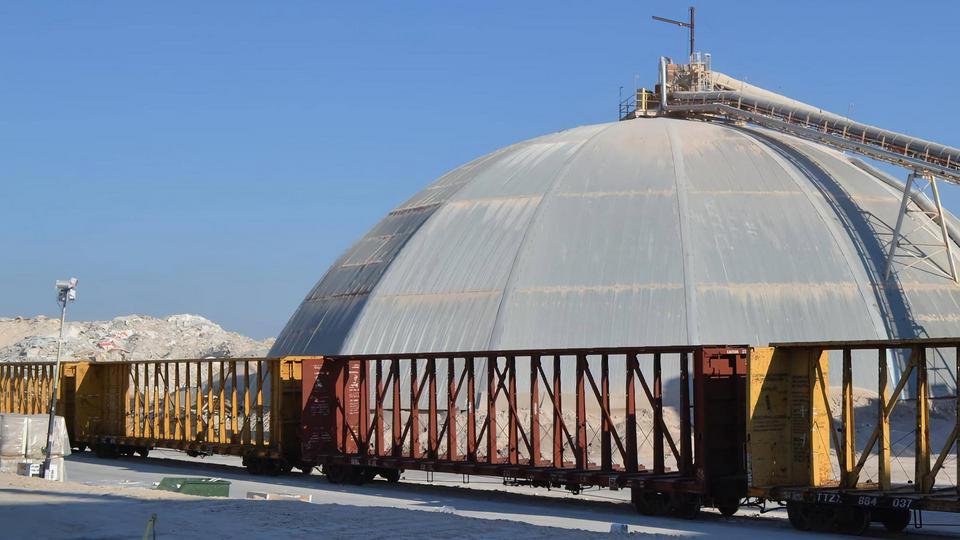
The Monolithic Dome replaces a steel gypsum storage dome built in the 1960s which served as the gypsum storage for almost 50 years before it began to fail due to age and corrosion.
Shell construction is almost complete for a large gypsum storage east of Las Vegas, Nevada. PABCO Gypsum is a vertically integrated mining and manufacturing facility that produces 110 million square meters of drywall per year. The new dome replaces a 50-year-old steel dome.
The Monolithic Dome built by South Industries is 215 feet diameter by 77 feet tall and can store 50,000 tons—almost 1,000,000 cubic feet—of bulk powder gypsum. The gypsum is mined on-site, crushed, processed, and stored in the dome until it’s needed.
The gypsum is removed via four, 4-foot by 4-foot openings along the floor. The material drops through the openings onto a conveyor and moved to the neighboring manufacturing plant. Front end loaders push the pile to the openings to keep the process moving.
PABCO Gypsum manufactures gypsum board—also called drywall, wallboard, Sheetrock—for commercial and residential construction across the west. It’s estimated that 7 metric tons of drywall are used in constructing the average US home.
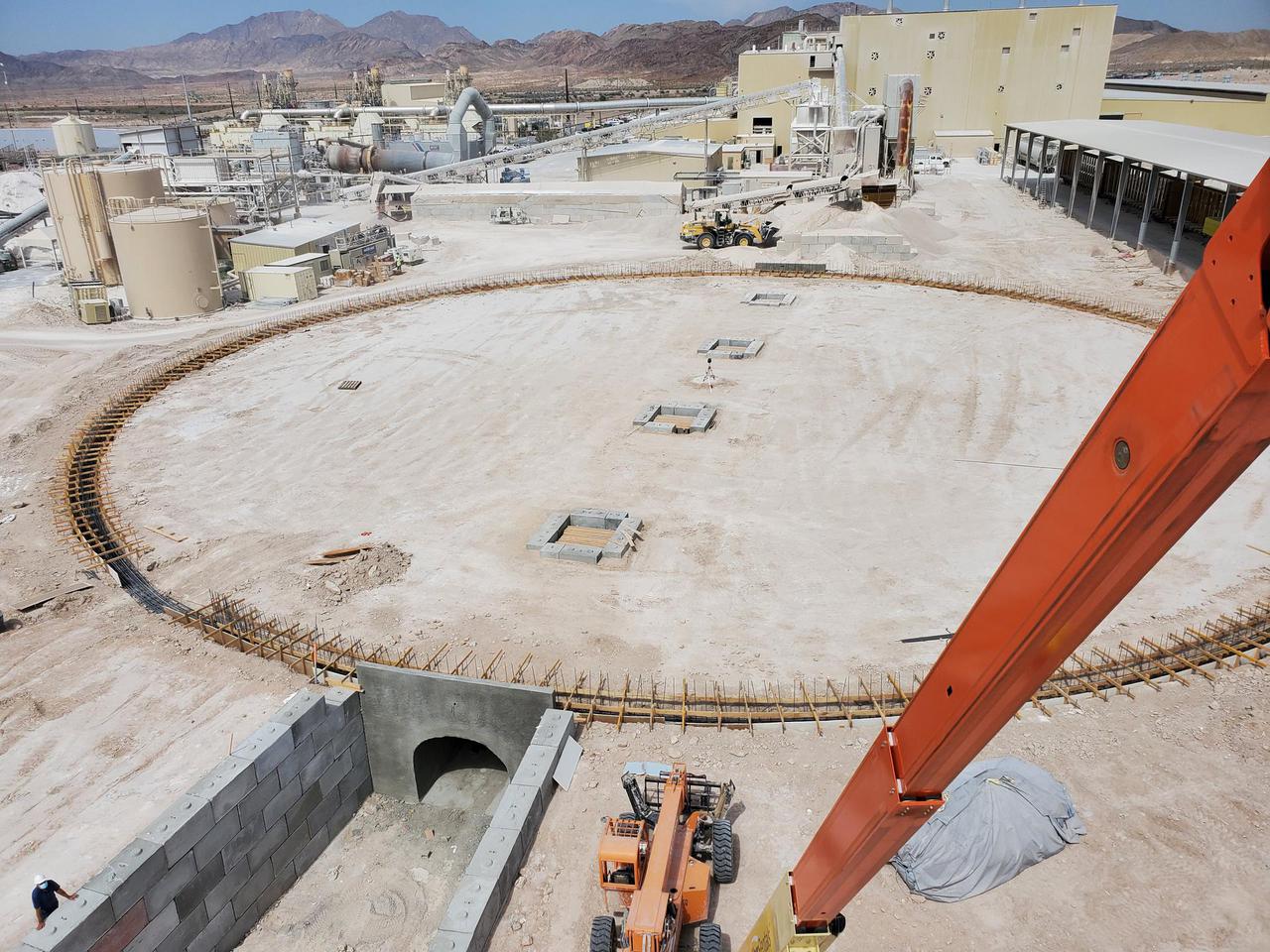
A 215-foot long tunnel runs underneath the ring-beam foundation with four, 4-foot by 4-foot openings in the floor. Bulk gypsum falls through the openings onto a conveyor and transferred to the manufacturing plant.
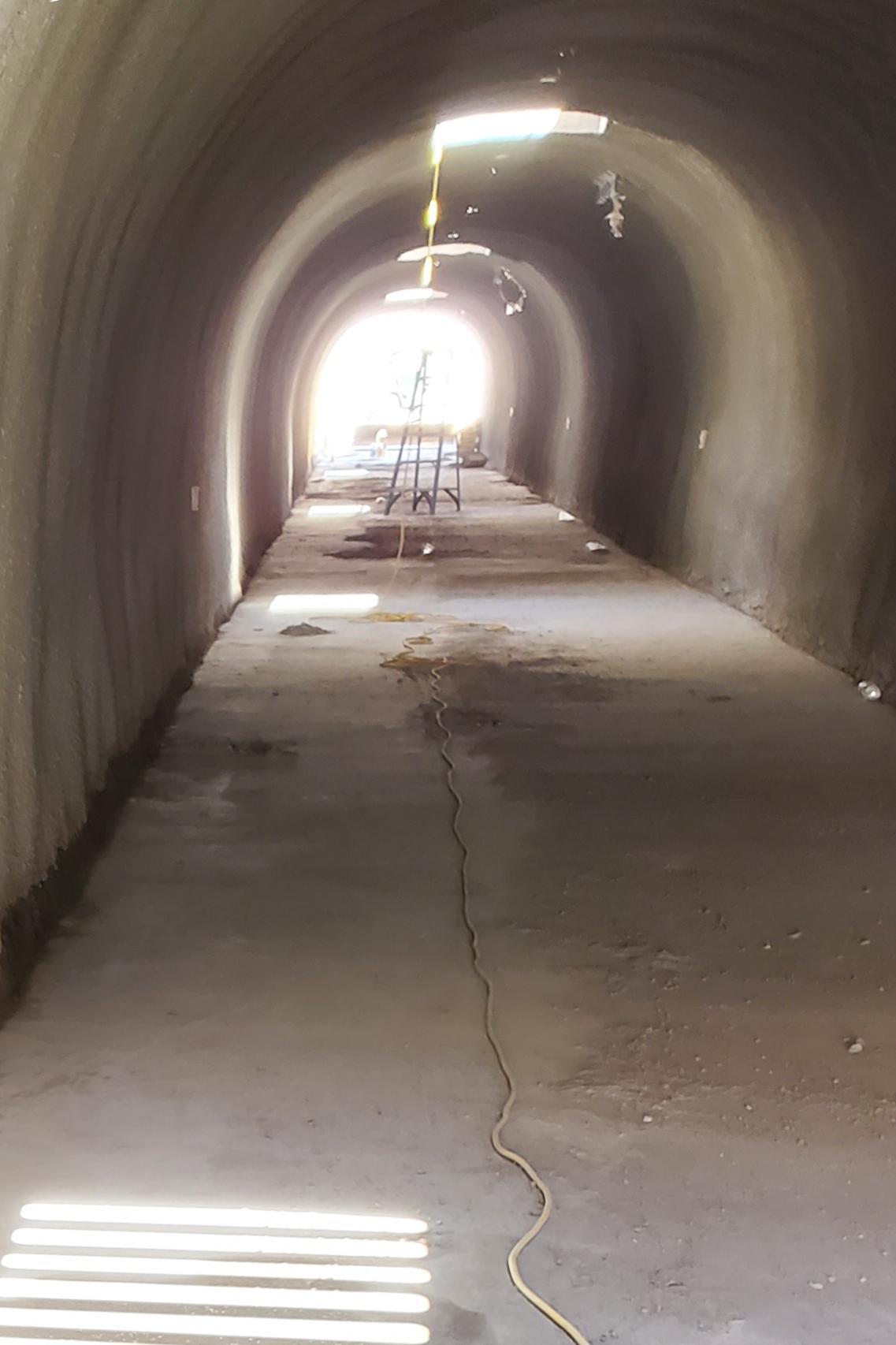
The tunnel is constructed using a method similar to the dome construction. A 215-foot long Airform is inflated in a trench then workers go inside, apply 1.5 inches of polyurethane foam, attach steel, and spray layers of shotcrete. The finished wall is 14 inches thick with dual-layers of reinforcing steel rebar.
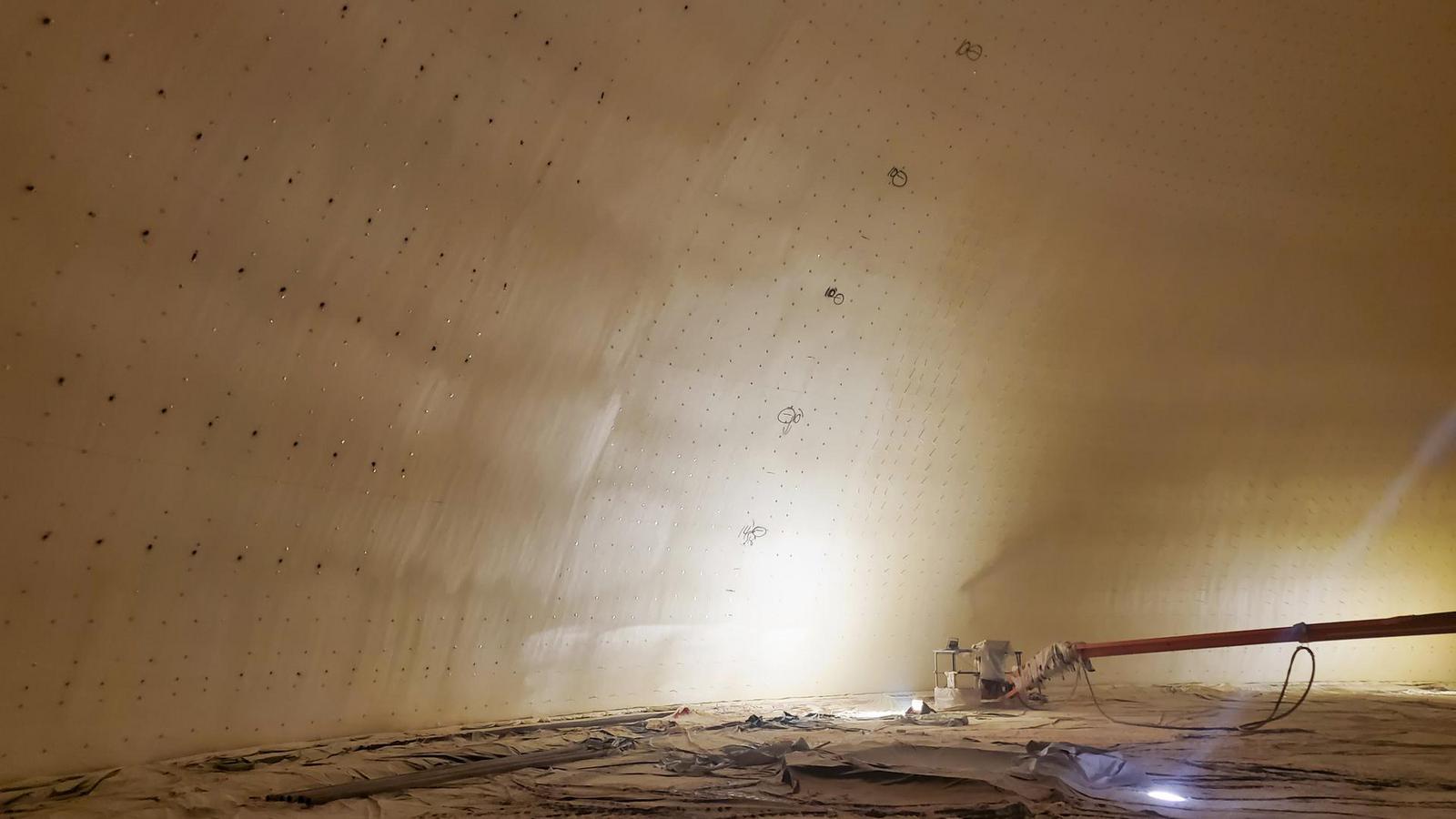
Rebar hangars—a small metal plate with a wire tie—are pushed into the initial foam layer. More layers embed the stickers, leaving the wire sticking out for attaching steel rebar.
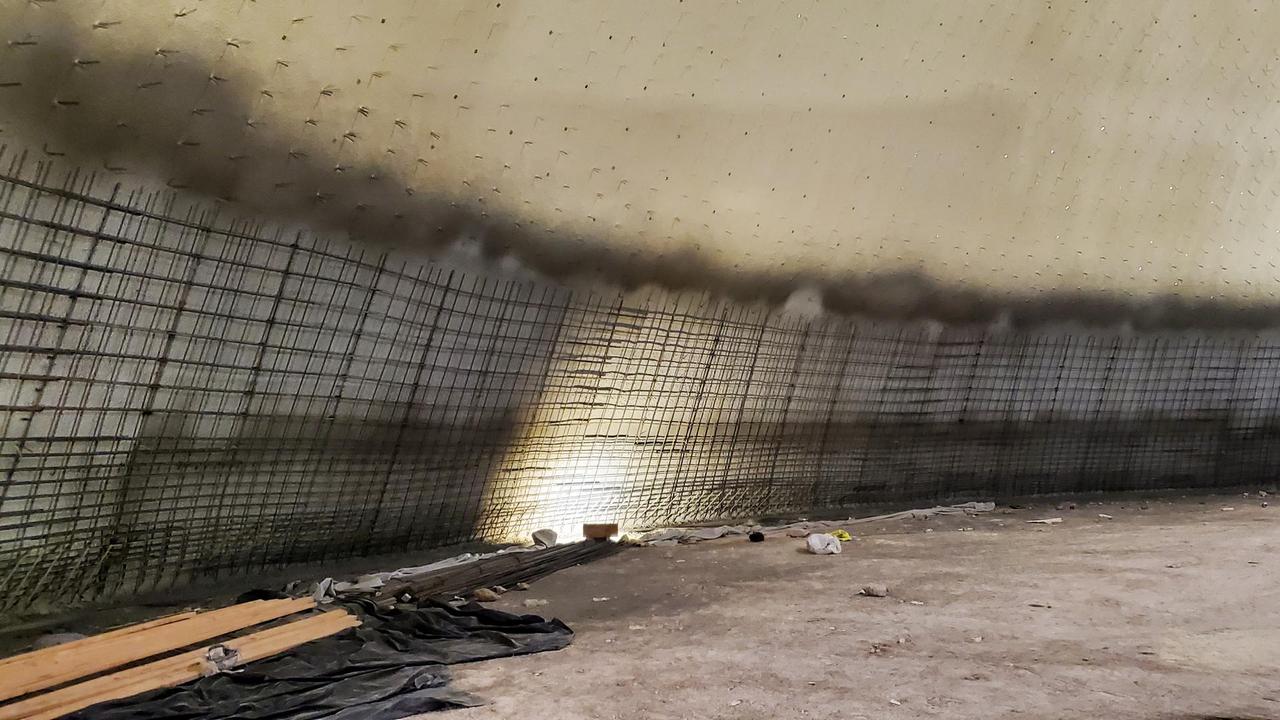
Construction continues from the bottom up with rebar installed for the base and the first layer of concrete applied.
